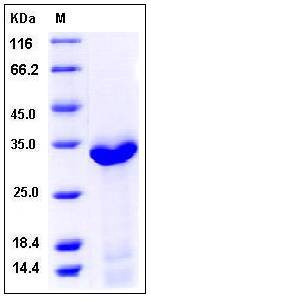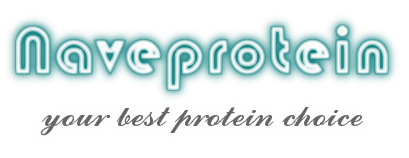Mouse HABP1 / C1QBP Protein (His Tag)
SDPR
- 100ug (NPP3190) Please inquiry
| Catalog Number | P50199-M07E |
|---|---|
| Organism Species | Mouse |
| Host | E. coli |
| Synonyms | SDPR |
| Molecular Weight | The recombinant mouse C1QBP consisting of 215 amino acids and has a calculated molecular mass of 24.7 kDa. rmC1QBP migrates as an approximately 32 kDa band in SDS-PAGE under reducing conditions. |
| predicted N | Met |
| SDS-PAGE |  |
| Purity | > 92 % as determined by SDS-PAGE |
| Protein Construction | A DNA sequence encoding the mature form of mouse C1QBP (NP_031599.2) (Leu 72-Gln 279) was expressed, with a polyhistide tag at the N-terminus. |
| Bio-activity | |
| Research Area | Microbiology |Pathogenic microorganism |viruses |animal virus |viral illness |Viral hemorrhagic fever | |
| Formulation | Lyophilized from sterile PBS, pH 7.4 1. Normally 5 % - 8 % trehalose and mannitol are added as protectants before lyophilization. Specific concentrations are included in the hardcopy of COA. |
| Background | Hyaluronan binding protein 1 (HABP1), also known as p32 or gC1qR, is a ubiquitously expressed multifunctional phospho-protein implicated in cell signalling. Hyaluronan-binding protein 1 (HABP1) /p32/gC1qR was characterized as a highly acidic and oligomeric protein, which binds to different ligands like hyaluronan, C1q, and mannosylated albumin. The role of hyaluronan binding protein 1 (HABP1) in cell signaling was investigated and in vitro. HABP1 overexpressing cells showed extensive vacuolation and reduced growth rate, which was corrected by frequent medium replenishment. Further investigation revealed that HABP1 overexpressing cells undergo apoptosis, and they failed to enter into the S-phase. The sperm surface HABP1 level can be correlated with the degree of sperm motility.Hyaluronan binding protein 1 (HABP1) was reported to be present on human sperm surface and its involvement in fertilization has already been elucidated: decreased HABP1 level may be associated with low motility of sperms, which in turn might cause infertility in the patient. HABP1 also is an endogenous substrate for MAP kinase and upon mitogenic stimulation it is translocated to the nucleus in a MAP kinase-dependent manner. |
| Reference |
